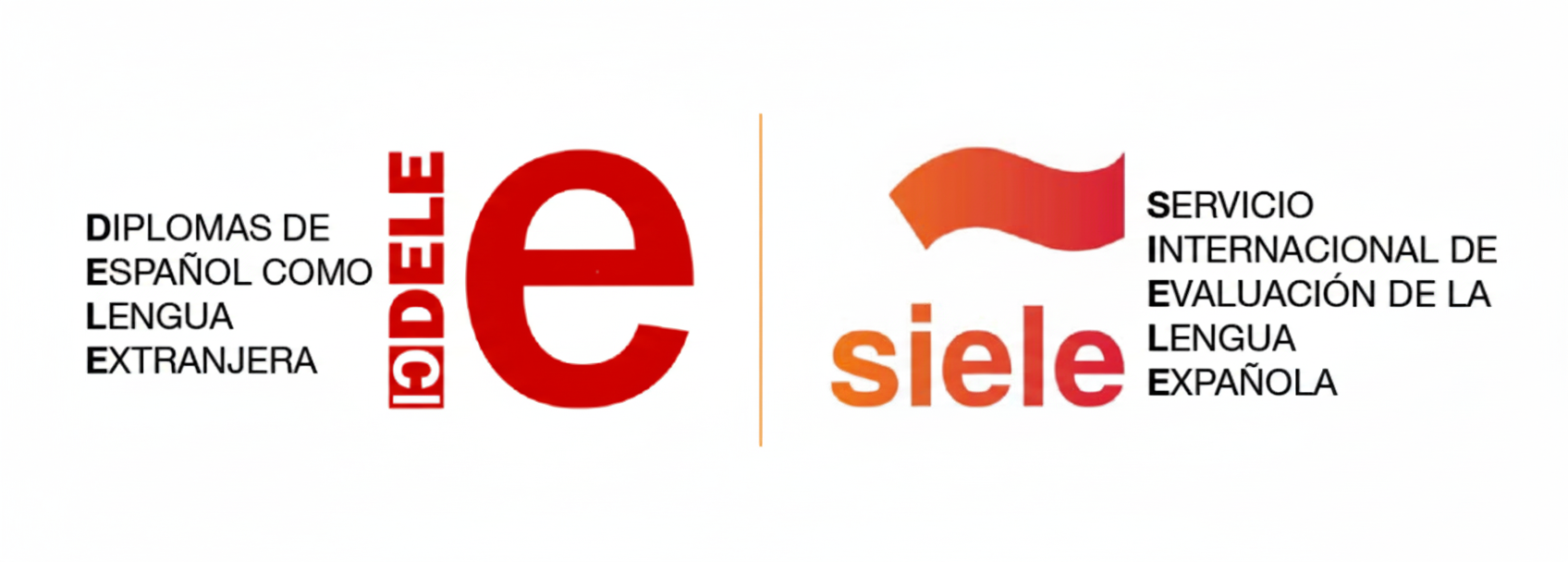If you’re planning to prove your Spanish skills, picking the right proficiency test can feel a little overwhelming. As a Spanish coach, I get asked all the time about which exam is best, which is most widely accepted by universities and employers, and how the different test levels actually work. Here, I’ll break it all down so you can confidently choose the best Spanish proficiency test for your needs, whether it’s for study, work, or just personal growth.

Understanding Spanish Proficiency Tests: What Are Your Options?
Spanish proficiency tests are designed to measure your language skills, and there are a few you’ll see most often. The two main players are DELE (Diploma de Español como Lengua Extranjera) and SIELE (Servicio Internacional de Evaluación de la Lengua Española), but there are other options you might come across, especially for specific regions, like CELU (mainly in Argentina) or language certifications offered by some universities.
For most learners, DELE or SIELE is the way to go. These are backed by big institutions and recognized pretty much worldwide. Picking the right one will depend on what you need it for; some countries or programs favor one over the other, and they each have their own structure.
It’s worth checking what test your target university or employer prefers before making a decision. In some parts of Latin America, regional tests or in-house exams offered by universities can also be useful. Yet, for international recognition, DELE and SIELE have the widest reach, and their acceptance is growing steadily across the global education and professional scene.
Which Is the Most Recognized Spanish Proficiency Test?
DELE is the best-known Spanish proficiency test around the world. It’s run by Instituto Cervantes on behalf of the Spanish Ministry of Education, and it’s been the go-to test for decades. Universities, employers, and even immigration authorities often ask for DELE certificates. SIELE has gained a lot of popularity in recent years, especially for younger students and those who need results quickly; when it comes to worldwide recognition, DELE is still top dog.
However, SIELE is increasingly being accepted by universities and companies, especially in Europe and Latin America. As digital exams become more popular, SIELE’s flexible scheduling and digital format are helping it catch up quickly in terms of recognition and use. Some newer programs even allow either certificate, meaning students now have more options than ever before.
DELE vs SIELE: Which Is Better?
This is one of those “it depends” questions I hear often, and the answer really comes down to your goals. Here’s a quick look at the basics of both exams:
- DELE: This is a traditional, paperbased test available at various levels, and your certificate never expires. It focuses on real-life communication, and each exam targets a specific level (A1, A2, B1, B2, C1, or C2). A DELE diploma is permanent proof of your ability.
- SIELE: SIELE is fully digital, often more convenient to schedule, and results are ready faster (in about three weeks). Instead of picking one level, SIELE tests you across four areas (reading, listening, writing, and speaking) to give you a score on the CEFR scale. SIELE results are valid for five years, which is usually fine for university admissions or job applications.
If you need a certificate for life or for formal immigration or government processes, I usually suggest DELE. If you want something quicker, more flexible, or aimed at a broad skillset, SIELE could be the better choice. Both are respected and accurate, though.
Another detail to think about is test format: some people find a traditional paperbased environment more comfortable, while others appreciate the convenience of a digital test. SIELE’s modular format (you can take individual sections or the whole set) adds flexibility, which is helpful for those who want to show just reading/writing or another specific skill.

Spanish Test Levels Explained: What Do A1, A2, B1, B2, C1, C2 Mean?
The letters and numbers you see on Spanish test websites refer to the CEFR (Common European Framework of Reference for Languages) system, which is used all over the world to describe language levels. Here’s a breakdown of what each level means in everyday terms:
- A1 (Beginner): Can use basic phrases, introduce themselves, and ask simple questions.
- A2 (Elementary): Understands common expressions, can communicate in simple, routine situations.
- B1 (Intermediate): Can handle day-to-day conversation, talk about experiences, and deal with travel needs.
- B2 (Upper Intermediate): Is comfortable with more complex texts, can hold detailed discussions, and express opinions.
- C1 (Advanced): Can use language flexibly for social, academic, and professional purposes, and understand a wide range of demanding texts.
- C2 (Proficient/Mastery): Speaks almost like an educated native, understands virtually everything heard or read, and can summarize information from different spoken and written sources.
Both DELE and SIELE use this framework. Employers and universities often require B2 or C1, and C1 or higher is needed for tasks like teaching in Spanish or working in highlevel professional environments.
If you’re unsure of your current level, most online platforms or tutors can help you get a rough idea through a quick assessment. Practice tests from both DELE and SIELE can also help you spot the right starting point by simulating real exam difficulty. If you are curious and would like to take a test to see your level, you can access one here.
How Do Spanish Proficiency Tests Compare to TOEFL or IELTS?
The DELE and SIELE are for Spanish, while IELTS and TOEFL are for English proficiency. Some folks planning to study or work abroad ask if they should take IELTS or TOEFL, but those are usually only needed if you’re proving your English ability. If you need to show you’re good at Spanish, stick with DELE or SIELE; if it’s English, pick TOEFL or IELTS based on what your institution accepts. If you’re in doubt, I always recommend double-checking the specific requirements for your goal.
The general structure of the exams is similar, focusing on reading, writing, listening, and speaking. However, the content is naturally tailored to either Spanish or English. Each test checks communication skills that are relevant for daily life or professional settings in that language, so taking the correct test for your situation saves time and effort.
What’s the Best Proficiency Test for Spanish?
If you want global recognition and a certificate that doesn’t expire, I recommend DELE. It’s especially good for immigration, work visas, and university admissions. SIELE, on the other hand, is super practical if you’re short on time, want a digital experience, or prefer not to commit to a single level. Both tests are well respected, and the “best” comes down to where you are in your Spanish adventure and what your plans are after testing.
Some students choose SIELE to get a quick certificate that fulfills immediate university or job needs, and then later take DELE if they decide to aim for permanent proof or broader recognition. Either way, preparing for one gives you valuable insight into your skills and spots areas to strengthen for the next stage of learning.
Choosing the Right Test: What You Should Think About
It’s smart to consider a few things before registering for a Spanish test. These are the main points I recommend you keep in mind:
- Your Goals: Think about whether you want the certificate for university, work, immigration, or just for your own growth. Some organizations only accept DELE; others may take SIELE or both.
- Test Dates and Locations: DELE has set dates throughout the year and a traditional test center setup. SIELE is more flexible and digital, with lots of centers worldwide.
- Expiry: DELE never expires, so you don’t need to retake it in the future. SIELE is good for five years, which is still plenty for most uses.
- Cost and Format: DELE can cost a bit more, and the process is a little more formal. SIELE’s digital format can be more convenient.
- Preparation: Both exams require solid practice in reading, writing, listening, and speaking. Official practice materials are worth checking out on the DELE and SIELE sites (DELE info, SIELE info).
Doing a bit of research and possibly taking a sample exam will help you feel confident in your choice. Don’t hesitate to ask language tutors or others who have taken the exams about their experiences—they can shed light on what to expect on test day.
Tips for Succeeding on Your Spanish Proficiency Test
I always encourage my students to prep with real past exams and to practice speaking, since that’s usually the part people find most nervewracking. Here are a few personal tips from my tutoring sessions:
- Emailing or chatting with friends in Spanish can boost your real-life vocabulary quickly.
- Set aside blocks of time to focus on each skill: reading, writing, speaking, listening.
- Try language exchange platforms; a simple half-hour chat can do wonders.
- Get feedback from a tutor or a language group so you learn from your mistakes early.
- If you get nervous, practice mindfulness or light exercise right before the exam; that can help clear your head.
Try mixing in media like podcasts, Spanish-language news, or movies to get used to a range of accents and topics. This not only boosts your listening skills but also expands your passive vocabulary. Also, don’t skip the writing section during your prep—it’s a key part of both exams.
Spanish Test Preparation Resources
Both DELE and SIELE offer official resources, including free practice tests and sample audio clips. Here’s where to look:
- Instituto Cervantes (DELE) – for exam guides and practice materials.
- SIELE Official Website – demo tests and scoring samples.
- Online language platforms, like Italki, local tutors, and even YouTube channels focused on Spanish exam skills, so you’ve got lots of ways to prep efficiently.
You can also find mobile apps that let you practice vocabulary and grammar on the go. Some platforms offer simulated exams for both DELE and SIELE formats, making it easy to track down your strengths and weaknesses. Using multiple types of resources helps keep your prep interesting and targeted, building real confidence for test day.
Common Questions about Spanish Proficiency Testing
What level of DELE is considered fluent?
B2 is generally viewed as the “fluent” level for everyday life, travel, and work. C1 allows for more comfortable academic and professional language use, and C2 is near-native. For most jobs or study programs, B2 or C1 is totally solid.
Does DELE expire?
Nope. Once you pass a DELE exam, that certificate is yours for life. That’s a big advantage if you want something permanent for your resume or immigration paperwork.
What is the hardest language proficiency test?
C2 level tests are always the trickiest, no matter what language, because they expect you to perform almost like a native speaker. In Spanish, both DELE C2 and SIELE’s highest bands are challenging. They demand deep understanding, advanced vocabulary, and super strong writing and speaking skills. The DELE C2, in particular, is known for being tough, even for very advanced learners.
Should I take IELTS or TOEFL?
Only if you need to prove your English; for example, for university applications in the US, UK, or Australia. If you’re showing Spanish skills, DELE or SIELE are the right tests for you.
Which is the highest proficiency level?
C2 is the top level on the CEFR scale and shows complete mastery of the language. Very few nonnative speakers reach this, but if you do, nothing proves your ability better
Guess what? When you click and buy through our links, you’re not just boosting your Spanish skills—you’re supporting us at no extra cost. It helps us keep delivering top-notch tips and resources to you. It’s a win-win for both of us!


